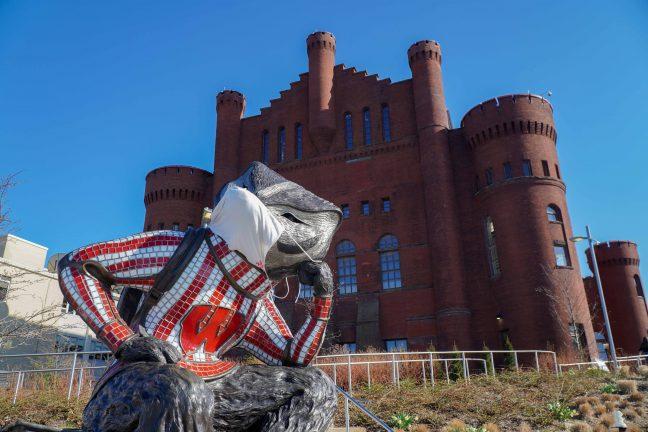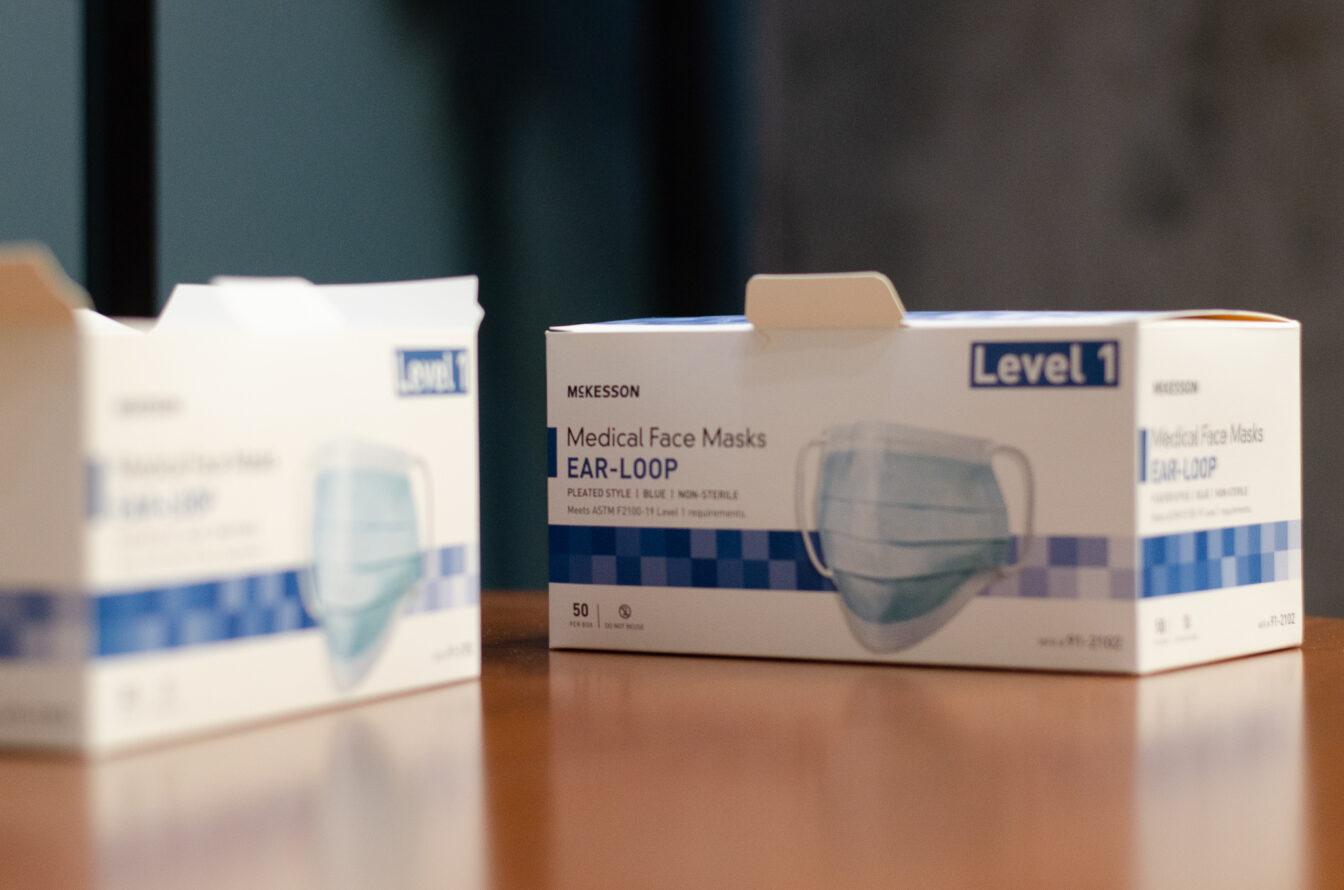A team of University of Wisconsin engineers designed a mask-fitting accessory known as the “Badger Seal” to reduce the spread of COVID-19. The Badger Seal is an adjustable elastic device that fits a mask more snugly over the mouth and nose.
According to a UW press release, the engineers developed the Badger Seal to reduce airflow out of poor-fitting masks. Masks are often too loose on users’ faces, creating gaps that allow for particles to travel in and out of the users’ respiratory system.
The Badger Seal reduces these gaps, protecting people from the breath particles and droplets that spread COVID-19 and other diseases.
UW mechanical engineers Scott Sanders and David Rothamer were the initial people who began the development of the device and both conducted research on particle filtration.
“My research is focused on internal combustion engines and combustion,” Rothamer said. “And as part of that, [I did] some work that focuses on filtration particulate emissions from the exhaust stream of engines.”
Due to their experience studying particle filtration, UW reached out to Rothamer and Sanders to find a way to reduce the transmission of infectious breath particles. They conducted experiments to determine the most effective way to put a mask on, Rothamer said.
Sanders said the experiments involved applying masks to mannequin heads which then exhaled a fog solution through the mask, mimicking a human’s breath.
Rothamer said the best results arose when Sanders fully taped a mask on a mannequin head. This created a complete seal, reducing the amount of particles escaping the mask.
Wisconsin groups introduce new campaign to help stop COVID-19 spread
Rothamer and Sanders realized people wouldn’t simply tape their masks on their faces. The goal was to create an accessory that successfully filtered breath particles without sacrificing wearability, Rothamer said. They reached out to Lennon Rodgers, an experienced engineer and director of the UW makerspace, according to the press release. Sanders said Rodgers was responsible for the design aspect of the Badger Seal.
Hospitals in the area are using one of Rodgers’ designs, a full-face shield, dubbed the “Badger Shield,” to protect doctors.
Rothamer, Sanders and Rodgers created a model for the Badger Seal that reduced the spread of COVID-19 without being uncomfortable for the wearer.
Wisconsin COVID-19 spread reaches ‘uncontrolled’ level experts say
Another notable feature of the Badger Seal was its ability to improve filtration capabilities without inhibiting breathing.
“You can form it to your face because it’s made out of this steel wire so it’s more customizable,” Sanders said. “Also, there are other advantages to it. Basically, you can tell if it’s working because it moves in and out every breath.”
According to the press release, students and staff in the Makerspace produced about 2,500 Badger Seals in house. Those products were largely distributed to faculty and staff.
Director of Safety for the College of Engineering Jesse Decker acted as an early test subject for the Badger Seal. Decker said he acts as the middle-man between the design team and distribution.
“Once [Rodgers] had a solid design,” Decker said, “I was glad to promote it strongly within the College of Engineering and to our central UW-Madison Environmental and Occupational Health team to try and get it moving at a campus level.”
Freshmen face difficulties adapting to university life in age of COVID-19
Rothamer said the team is working with manufacturing partners, so that more distribution to UW students and employees will begin soon. Rothamer also said UW made efforts to collaborate with the United Nations Development Fund on more general PPE development projects.
UW professor of engineering and material science Michael Arnold expressed admiration for the project in the press release. Arnold said he is using the Badger Seal as an example for how engineers can use their skills to make the world a better place.
Rothamer said the most rewarding part of the project was seeing people actually use the Badger Seal.
“I talked to the faculty and there are a number of people who definitely are using them in their lectures and so I think that it’s really important to see that they’re having some impact,” Rothamer said.














